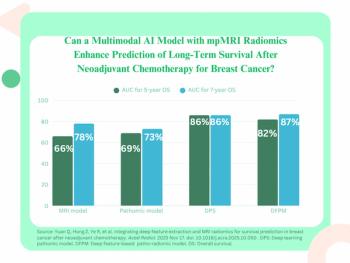
Report from RSNA: Medicare imaging costs skyrocket, as cardiologist involvement rises
Radiologists who wonder why diagnostic imaging has been targeted for utilization constraints need only examine the Medicare B experience from 2000 to 2005. Medicare payments for outpatient medical imaging rose 93% during that period from $6 billion to more than $11 billion. The increase reflected a shift in preference to high-cost, high-tech modalities, especially CT and MR. Utilization among cardiologists exploded.
Radiologists who wonder why diagnostic imaging has been targeted for utilization constraints need only examine the Medicare B experience from 2000 to 2005. Medicare payments for outpatient medical imaging rose 93% during that period from $6 billion to more than $11 billion. The increase reflected a shift in preference to high-cost, high-tech modalities, especially CT and MR. Utilization among cardiologists exploded.
Dr. Vijay Rao, radiology director at Thomas Jefferson University, presented findings drawn from the Medicare Physician/Supplier Procedure Summary Master Files for 2000 to 2005. Data included all procedures in the 70000 CPT code series and echocardiography and vascular imaging codes from the 90000 series. Invasive procedures were excluded, as were technical component claims, to avoid redundancy. Also excluded were claims from independent diagnostic testing facilities and multispecialty groups.
Physician specialty codes were used to determine which specialty billed for the service, Rao said at the 2007 RSNA meeting.
The trend line for Medicare Part B imaging growth was flat through the latter half of the 1990s before moving steadily upward, Rao said. By 2005, more than four outpatient imaging exams were performed for each Medicare beneficiary, up from three exams per beneficiary in 1996. On a procedural basis, overall utilization rate for noninvasive diagnostic imaging among the Medicare fee-for-service population increased 23% in the five-year period.
The utilization rate for radiologists rose steadily from 2000 to 2005, though the annual growth rate was slightly lower than overall utilization. The overall growth rate among radiologists during the five years was 22%. They performed slightly more than 2000 exams per 1000 beneficiaries in 2000. That total rose to slightly more than 2500 exams per 1000 beneficiaries in 2005.
Plain-film x-ray and mammography involve the highest overall utilization, but growth for these modalities was a modest 9% during the five years. CT performed by radiologists jumped 69% to 500 procedures per 1000 beneficiaries, and ultrasound rose 30% to 200 scans per 1000. MR increased 82% to about 140 scans per 1000, and nuclear/PET was up 17% to slightly more than 10 scans per 1000.
The trend line for percentage growth for other specialties, except cardiology, is similar from group to group: about 24% during the five-year period. Cardiologists experienced a 65% increase in imaging utilization, however, from about 400 scans per 1000 in 2000 to nearly 700 in 2005. No other physician group came close to that explosive growth. Orthopods enjoyed about a 25% growth. They performed about 200 procedures per 1000 in 2005, up from 180 procedures per 1000 in 2000, Rao said.
For more online information, visit Diagnostic Imaging's
Newsletter
Stay at the forefront of radiology with the Diagnostic Imaging newsletter, delivering the latest news, clinical insights, and imaging advancements for today’s radiologists.




























